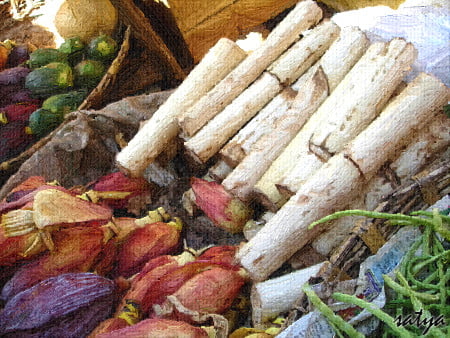Banana Stem, A Super Food With Multiple Benefits

The stem of the banana plant is packed with flavour and nutrition. This part of the plant is well devoured in every nook and corner of Odisha. This plant helps in controlling diabetes and weight loss.
The dish made from the stem or pith finds a place in every kitchen in Odisha due to its affordability, medicinal benefits and availability. It’s a wonder plant whose every part is consumed – stem, flower, leaves and fruits.
In Odisha, the stem is a delicacy and cooked in various ways.
The stem is herbaceous, non-woody and popularly known as ‘kadali manza’. The outer part is removed and the solid pale green or ivory solid portion, the pith or manza, that is consumed is flavoursome and nutritious. The fibrous portion is consumed in different ways — as an ingredient in curries; it is also fried, made into kebabs, tikkis and cutlets; and also as juice.
The stem or the manza is a rich source of fibre, vitamins, potassium and antioxidants. Scientifically it is proven that it helps in controlling diabetes and losing weight. In totality, each part of the tree is full of nutrients, providing different kinds of health benefits if supplemented along with the stem.
The fruit, raw banana, is a source for fibre. It has starch which is diabetes resistant, reduces cholesterol level, and improves metabolism and gastrointestinal health. The flower of the tree has a lot of fibres and helps in improving the health of gut bacteria.
The stem has a crunchy and earthy flavour and is a rich source of polyphenols and antioxidants such as gentisic acid, ferulic acid. A regular ingestion of these nutrients helps control blood sugar, reduce high blood pressure and weight loss.
The stem has a low glycemic index leading to low sugar – increasing capacity. High fibre content helps in easing bowel movements.
Urologists recommend banana stem juice due to the presence of potassium and vitamin B12 which is a detoxifying agent and also helps in boosting a healthy urinary tract. A regular intake by expecting mothers helps in avoiding urinary tract infection. The juice helps in treatment of diarrhoea and inflammation. In African countries, the juice is used for treating animal and reptile bites.
The manza in Odisha is consumed in varied forms. Of all the recipes, my favourite is the ‘manza tarkari’, which is tried and tested, and well documented by Usha Rani Tripathy. Normally I do not follow any fixed measurement as any home cook can have his/her own estimate on the quantity of ingredients to be used.
Method:
After peeling off layers of the stem, the hard pith or the manza is cut into round pieces while discarding the fine threads. These pieces are then chopped into small pieces. The raw banana or plantain and potatoes are cut into half-inch cubes. The onions are also chopped. Three pastes are to be prepared – first cumin, chilli and poppy seeds; second ginger garlic paste; third mustard paste.
The universal ‘badi’ has to be fried lightly in smoked mustard oil in a heavy wok. The badi has to be taken out and a little portion of cumin has to be added. When it crackles, the chopped onion has to be added, and as it turns to change colour to translucent, add ginger garlic paste along with the cumin paste. After frying for about a few minutes and when oil starts bubbling on the sides, the manza, potato, plantain or raw banana along with a little tomato puree are added. It is then stirred so that the vegetables and the manza get mixed uniformly with the spice.
When it starts to simmer and the vegetables soften, add the mustard paste along with a cup of water, stir to blend well. Add the badi and cook for around five minutes in low heat so that the pungency of the mustard stays. Serve hot with steaming rice garnished with celery.
Bon appetit…

Comments are closed.